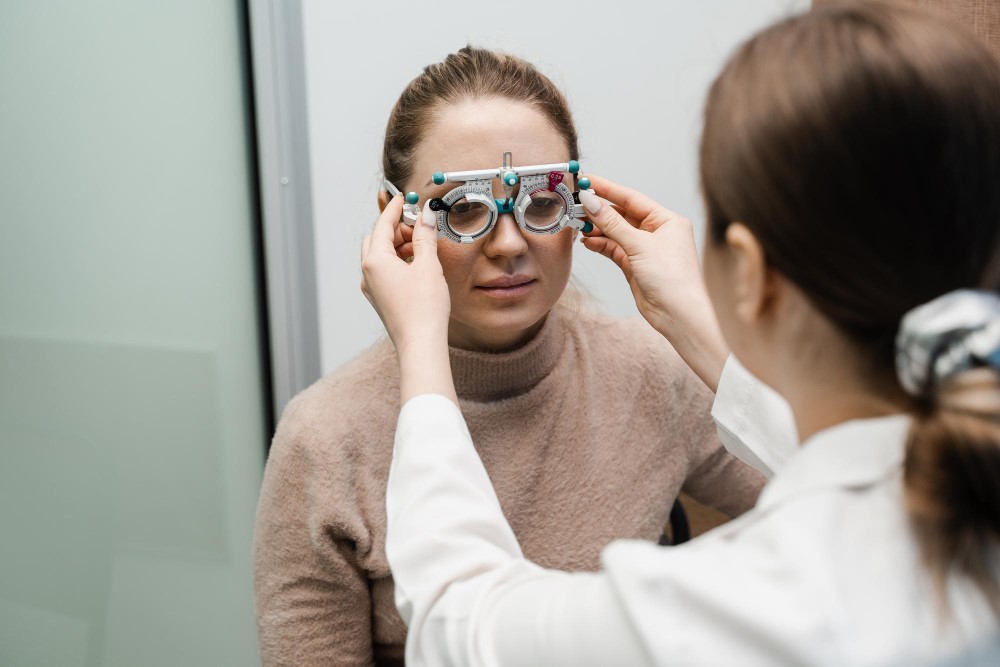Myopia, commonly known as nearsightedness, is becoming more common worldwide. Particularly in countries like India, there’s been a noticeable rise in its cases. Myopia impacts how people see things that are far away. It makes far-away objects look blurry, affecting daily activities like driving or watching TV.
Recent studies show a significant increase in myopia cases globally. In fact, it’s soaring at such a pace that some experts call it a myopia epidemic. In India alone, the number of people with myopia is climbing fast. This rise isn’t just a concern for individuals but for communities as well. It’s crucial to ask what is the reason for myopia getting more common.
Statistics reveal an astounding number: almost half the world could be myopic by 2050. In India, the situation is very similar. The question many ask is what causes myopia? Several factors appear to contribute. Urban lifestyles with limited time outdoors and prolonged screen exposure play significant roles. Knowing what causes myopia is vital in this context as it can help in finding ways to prevent it.
Understanding the rise in myopia is crucial for everyone. Parents, educators, and policymakers need to be aware of myopia signs to help manage it early. By doing so, we can take the necessary steps to control this trend and protect our eyes.
Decoding the Causes and Complications of Myopia
Understanding what causes myopia involves looking at both genetic and environmental elements. People with family members who are nearsighted are more likely to become myopic themselves. This suggests a genetic link that experts continue to explore.
Environmental factors are equally crucial. Growing children today spend less time outside. They are often glued to screens, playing video games, or watching TV. This limited outdoor activity is what causes myopia to increase rapidly in kids. Light exposure from the sun appears to be vital for eye development, and lack of it can be problematic.
When it comes to myopia complications, untreated nearsightedness can lead to more than just blurry vision. What happens if myopia is left untreated? There’s a risk of developing serious eye problems later in life. These problems might include glaucoma or retinal detachment. Thus, early myopia diagnosis is necessary to prevent these issues from occurring.
In recent times, research into what causes myopia has become widespread. Studies suggest a combination of lifestyle and genetic factors as reasons for current trends. With technology becoming a big part of life, managing screen time and encouraging outdoor activities are essential steps. Understanding these factors can help in creating better prevention strategies for the future.
Challenges and Solutions: Managing Myopia in India
India faces unique challenges when it comes to managing myopia. Access to eye care facilities is not equal across different regions. In rural areas, reaching an eye specialist can be difficult. The affordability of quality eye care also poses a significant issue.
Cultural beliefs play a role in eye health practices. Some might not prioritize regular check-ups due to myths and misconceptions. Breaking these myths involves educating people about myopia treatment options. There are several ways to handle myopia, including wearing glasses, contact lenses, and even surgical options.
New advancements, like special contact lenses or eye drops, show promise in slowing down the progression of myopia. Yet, understanding their effectiveness is crucial. Dispelling wrong beliefs about myopia diagnosis helps more people receive effective care.
Preventive measures hold great promise. It involves regular eye screenings and encouraging children to play outside. Embracing lifestyle changes is vital. Community initiatives that raise awareness make a difference. Encouraging simple habits, like breaks during screen time, can aid in managing myopia effectively. By strengthening these measures, managing myopia in India becomes far more attainable for everyone involved.
Understanding the Role of Awareness and Education
For many, education is the first step in dealing with myopia. In India, various resources and support systems are available. Government initiatives focus on promoting eye health among communities.
To foster wider awareness, it’s important to debunk myths about what are the symptoms of myopia and how it affects individuals. People need to know that myopia is not just a minor inconvenience. Knowing myopia signs helps individuals seek help promptly. Dispelling myths about myopia treatment options ensures the public receives accurate information.
The role of education can’t be overstated. Schools can play a massive part by teaching children about eye health. Parents must encourage outdoor activities for their youngsters. Understanding what happens if myopia is left untreated underscores the importance of early detection.
In conclusion, fostering awareness and education about myopia is key. A balanced lifestyle, with regular eye examinations, plays a pivotal role in maintaining healthy vision. To ensure everyone benefits from this knowledge, taking proactive measures becomes essential. Encouraging regular eye checks and spreading awareness helps communities tackle this common vision problem effectively, ensuring better eye health for all.


